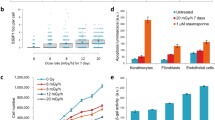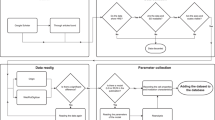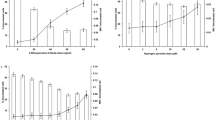Abstract
IF ionizing radiation is delivered in fractions, cells usually recover from “sub-lethal damage” inflicted by one dose during the time which elapses before the next dose is given. This phenomenon has been observed with many types of cell, ranging from micro-organisms to higher cells in organized tissues1–4. In many experimental systems, this phenomenon has been studied by comparing the effects of two doses, separated by varying intervals of time, with those of the more damaging single total dose of equal magnitude. The dose required to produce a given effect must be increased if oxygen is excluded from the irradiated system; but the extent of recovery after a given amount of damage has in several instances been the same, whether or not oxygen was present during irradiation (refs. 5 and 6 and unpublished results of A. Howard). Some results have, however, been recorded in which the absence of oxygen during irradiation resulted in less recovery from sub-lethal damage3,7.
This is a preview of subscription content, access via your institution
Access options
Subscribe to this journal
Receive 51 print issues and online access
$199.00 per year
only $3.90 per issue
Buy this article
- Purchase on Springer Link
- Instant access to full article PDF
Prices may be subject to local taxes which are calculated during checkout
Similar content being viewed by others
References
Jacobson, B. S., Radiat. Res., 7, 394 (1957).
Elkind, M. M., and Sutton, H., Radiat. Res., 13, 556 (1960).
Hall, E. J., and Cavanagh, J., Brit. J. Radiol., 40, 128 (1967).
Hornsey, S., and Vatistas, S., Brit. J. Radiol., 86, 795 (1963).
Alper, T., and Hornsey, S., Brit. J. Radiol., 41, 375 (1968).
Elkind, M. M., Alescio, T., Swain, R. W., Moses, W. B., and Sutton, H., Nature, 202, 1190 (1964).
Littbrand, B., and Revész, L., Nature, 203, 889 (1964).
Bold, H. C., Bot. Rev., 8, 69 (1942).
Huttner, S. H., Provasoli, L., Schatz, A., and Haskins, C. P., Proc. Amer. Phil. Soc., 94, 152 (1950).
Sager, R., and Granick, S., Ann. NY Acad. Sci., 56, 815 (1953).
Bernstein, E., Science, 131, 1528 (1960).
Alper, T., Moore, J. L., and Bewley, D. K., Radiat. Res., 32, 277 (1967).
Pike, M. C., and Alper, T., Brit. J. Radiol., 37, 458 (1964).
Wolff, S., and Luippold, H. E., Science, 122, 231 (1955).
Abrahamson, S., Genetics, 44, 173 (1959).
Elkind, M. M., Swain, R. W., Alescio, T., Sutton, H., and Moses, W. B., in Cellular Radiation Biology (University of Texas 1965), 422 (Williams and Wilkins, Baltimore, 1967).
Author information
Authors and Affiliations
Rights and permissions
About this article
Cite this article
BRYANT, P. Survival after Fractionated Doses of Radiation: Modification by Anoxia of the Response of Chlamydomonas. Nature 219, 75–77 (1968). https://doi.org/10.1038/219075b0
Received:
Issue Date:
DOI: https://doi.org/10.1038/219075b0
This article is cited by
-
DNA susceptibility of Saccharomyces cerevisiae to Zeocin depends on the growth phase
International Microbiology (2019)
-
Does single-dose cell resistance to the radio-mimetic zeocin correlate with a zeocin-induced adaptive response in Chlamydomonas reinhardtii strains?
Radiation and Environmental Biophysics (2009)
-
Absence of oxygen effect for induction of resistance to ionising radiation
Nature (1976)
Comments
By submitting a comment you agree to abide by our Terms and Community Guidelines. If you find something abusive or that does not comply with our terms or guidelines please flag it as inappropriate.



